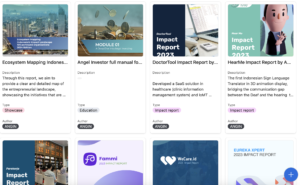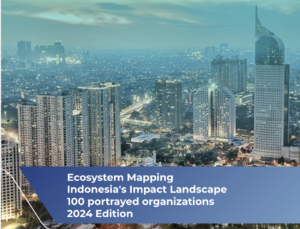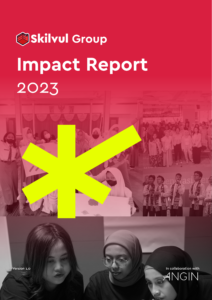[et_pb_section bb_built=”1″ admin_label=”section” transparent_background=”off” allow_player_pause=”off” inner_shadow=”off” parallax=”off” parallax_method=”off” padding_mobile=”off” make_fullwidth=”off” use_custom_width=”off” width_unit=”on” make_equal=”off” use_custom_gutter=”off” custom_padding_tablet=”50px|0|50px|0″ custom_padding_last_edited=”on|desktop”][et_pb_row background_position=”top_left” background_repeat=”repeat” background_size=”initial” _builder_version=”3.0.75″][et_pb_column type=”4_4″][et_pb_post_title admin_label=”%91RECAP%93 Criterion Institute: Gender Lens Investing Field-Building Workshop” title=”on” meta=”on” author=”on” date=”on” categories=”on” comments=”off” featured_image=”off” featured_placement=”below” parallax_effect=”on” parallax_method=”off” text_color=”dark” text_background=”off” module_bg_color=”rgba(255,255,255,0)” border_style=”solid” _builder_version=”3.0.75″ background_color=”rgba(255,255,255,0)” parallax=”on” /][/et_pb_column][/et_pb_row][et_pb_row][et_pb_column type=”4_4″][et_pb_gallery _builder_version=”3.0.75″ show_title_and_caption=”on” show_pagination=”on” gallery_ids=”7485,7483,7488″ fullwidth=”on” orientation=”landscape” zoom_icon_color=”#ffffff” hover_overlay_color=”rgba(255,255,255,0.9)” background_layout=”dark” pagination_font_size_tablet=”51″ pagination_line_height_tablet=”2″ border_style=”solid” hover_icon=”%%28%%” /][/et_pb_column][/et_pb_row][et_pb_row admin_label=”row” background_position=”top_left” background_repeat=”repeat” background_size=”initial”][et_pb_column type=”4_4″][et_pb_text admin_label=”News Content” background_layout=”light” text_orientation=”justified” background_color=”#f9f9f9″ border_style=”solid” custom_padding=”20px|20px|20px|20px” background_position=”top_left” background_repeat=”repeat” background_size=”initial” _builder_version=”3.0.75″ saved_tabs=”all” background_blend=”lighten” module_alignment=”justified”]
Criterion Institute held a two-days Gender Lens Investing workshop in Jakarta for the first time in years, with the support of Australian embassy.
The goal of the workshop was not only to share knowledge on gender lens investing but also to identify and empower field builders to amplify the implementation on the gorund. Hence, Founder of Criterion Institute, Joy Anderson, did not only share the concept and the implementation strategies of gender lens investing but also led a brainstorming session with participants on real action plans for Indonesia.
The event was well attended by enthusiasts; from gender experts, NGOs, investors, advisory firms, to development agencies. OXFAM, Dalberg, Sovereign Capital, Patamar Capital, UNDP, YCAB, PLUS, MCA and ANGIN were among the attendants.
[/et_pb_text][et_pb_text admin_label=”News Content” background_layout=”light” text_orientation=”justified” background_color=”#f9f9f9″ border_style=”solid” custom_padding=”20px|20px|20px|20px” background_position=”top_left” background_repeat=”repeat” background_size=”initial” _builder_version=”3.0.75″ saved_tabs=”all” background_blend=”lighten”]
Key Takeaways
- Gender lens investing can be defined as an intentional act to incorporate gender analysis into financial analysis to make better decision. Criterion Institutes came with a broad definition so people have freedom in defining the outcome in their own context (e.g. to close finance gap).
- There are several misconceptions on gender lens investing. Among them:
- Women as a screen for outcomes: Women should be seen as an opportunity rather than a screen. Many investors expressed fear that by implementing gender lens investing, they would shrink their number of deal flow as they thought it will limit their investment to women founders only. Gender lens is a process to make decision.
- In actual, gender lens investment also see opportunities coming from product and services benefiting women (fact: women account for 70-80% global consumer purchases), providing women access to capital (fact: simply, closing the gender capital gap leads to increase in GDP), and investing in companies with gender equity (fact: companies with gender diversity perform better)
- Counting gender in investment analysis: Counting (for example number of women on board, number of women beneficiaries) does not translate to investment value. Just like finance that relies on assumptions and patterns to measure investment values, gender should be analyzed based on gender patterns, not just quantity.
- Intersectionality, it is only about gender: A smarter financial analysis would study gender in a context rather than assuming a one-size-fits-all ; for example, in relation with race, sexual orientation, disability, and so on.
- Five strategies to use finance as a tool for social change:
- Channel resources to enterprises and investment opportunities: Move capital resources to enterprises that produce gender equitable outcomes
- Introduce new data or eliminate bias in how data is assessed: Introduce new data about gender patterns or eliminate bias in the current analysis approach, advocate others on gender analysis in finance (not only to assess the opportunity but also risks related to gender)
- Shift what expertise is trusted and what is seen valid: Strengthen the legitimacy of gender equitable process in public
- Realign power through structures and terms: Engage institutions to use gender analysis in financial instruments; terms are expressed in documents.
- Influence the goal and measure outcome: Measurement is important to ensure accountability and prevent unintended consequences coming from a lack of focus on outcomes
- Road ahead for Indonesia; All participants were committed to work together and collaborate in building the field of gender lens investing in Indonesia. They (and also Criterion Institute) agreed to share their data on gender and resources on women to be utilized together. An association is also considered as a mean to share experience and learning stories from one another.
[/et_pb_text][/et_pb_column][/et_pb_row][/et_pb_section]




